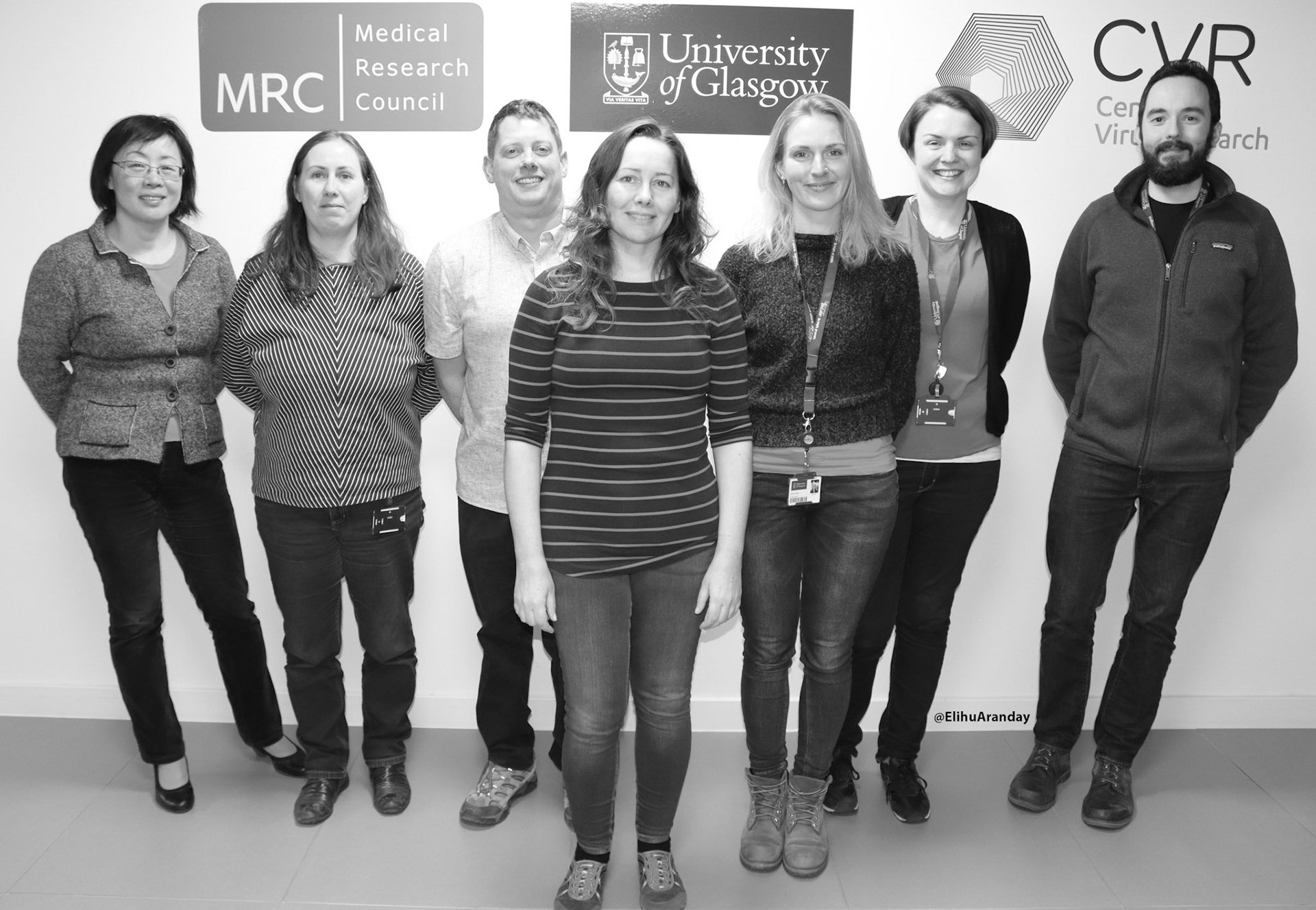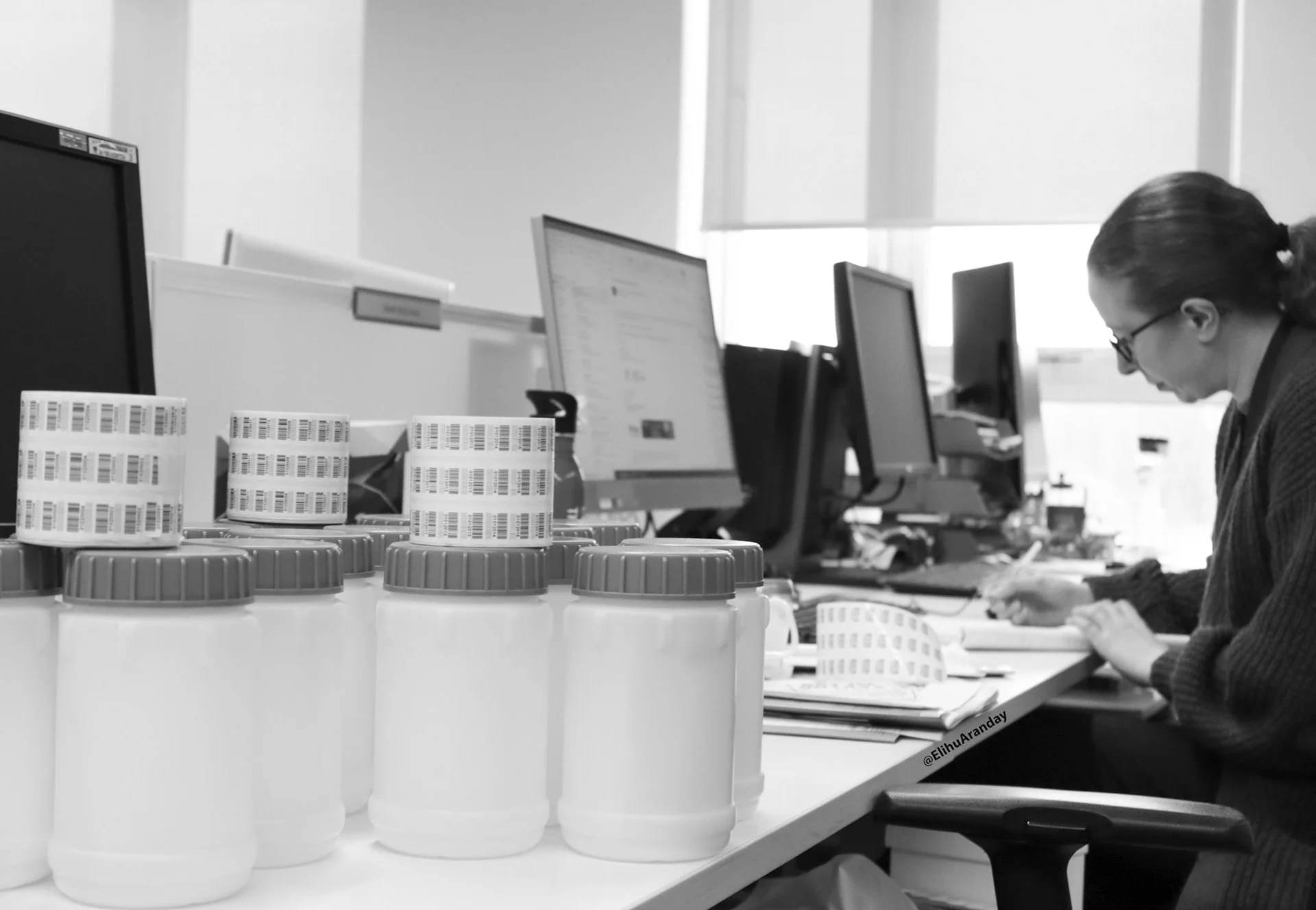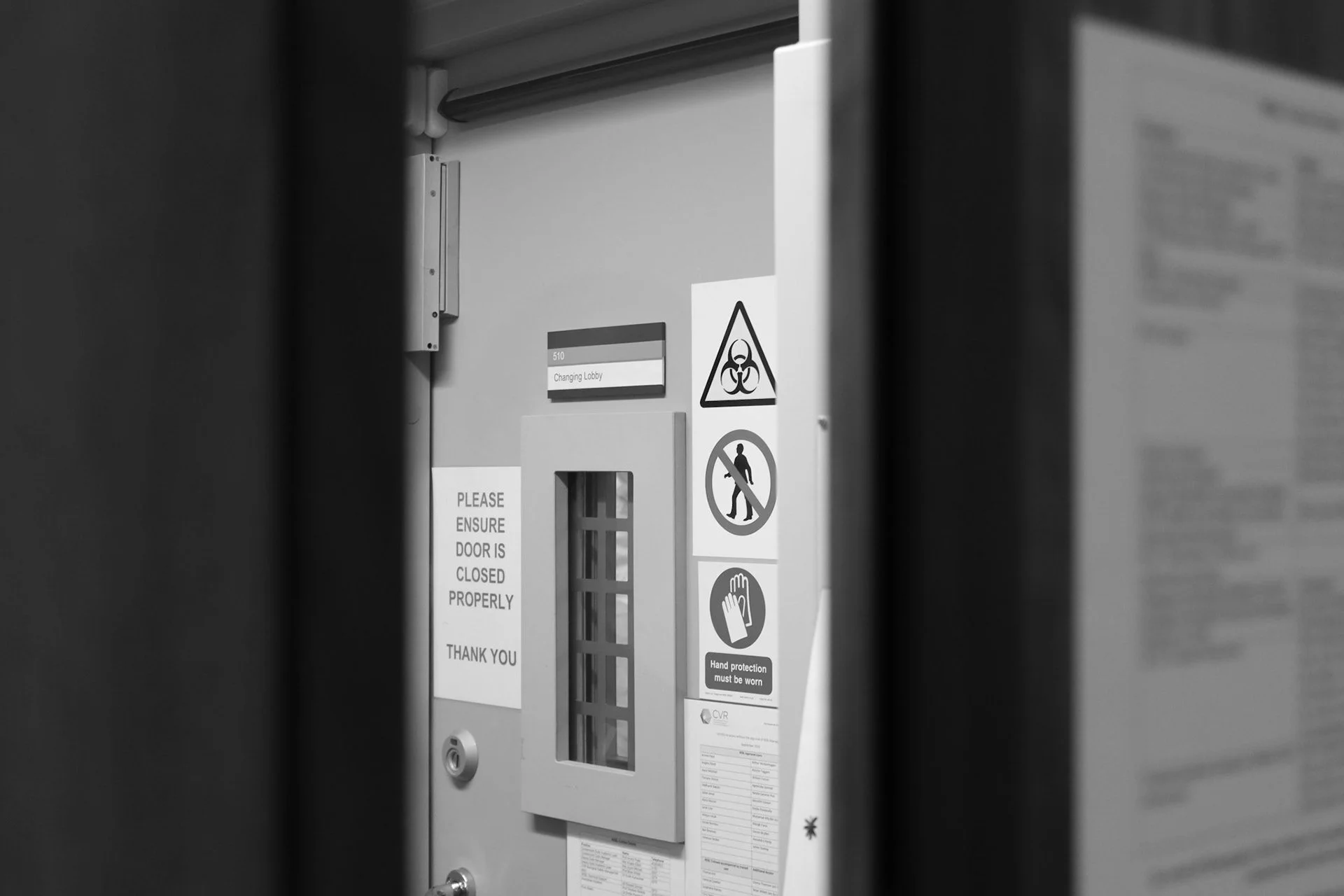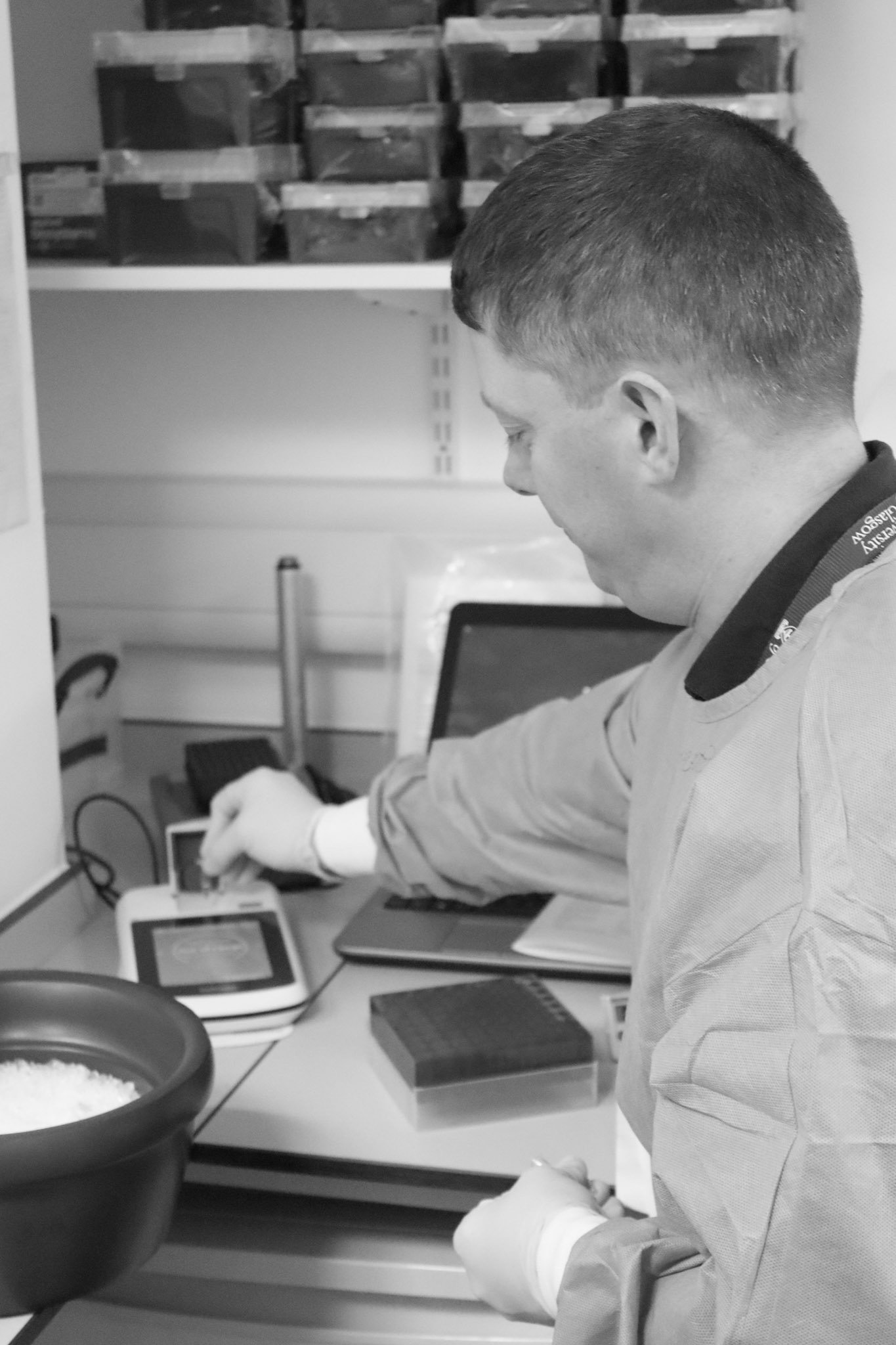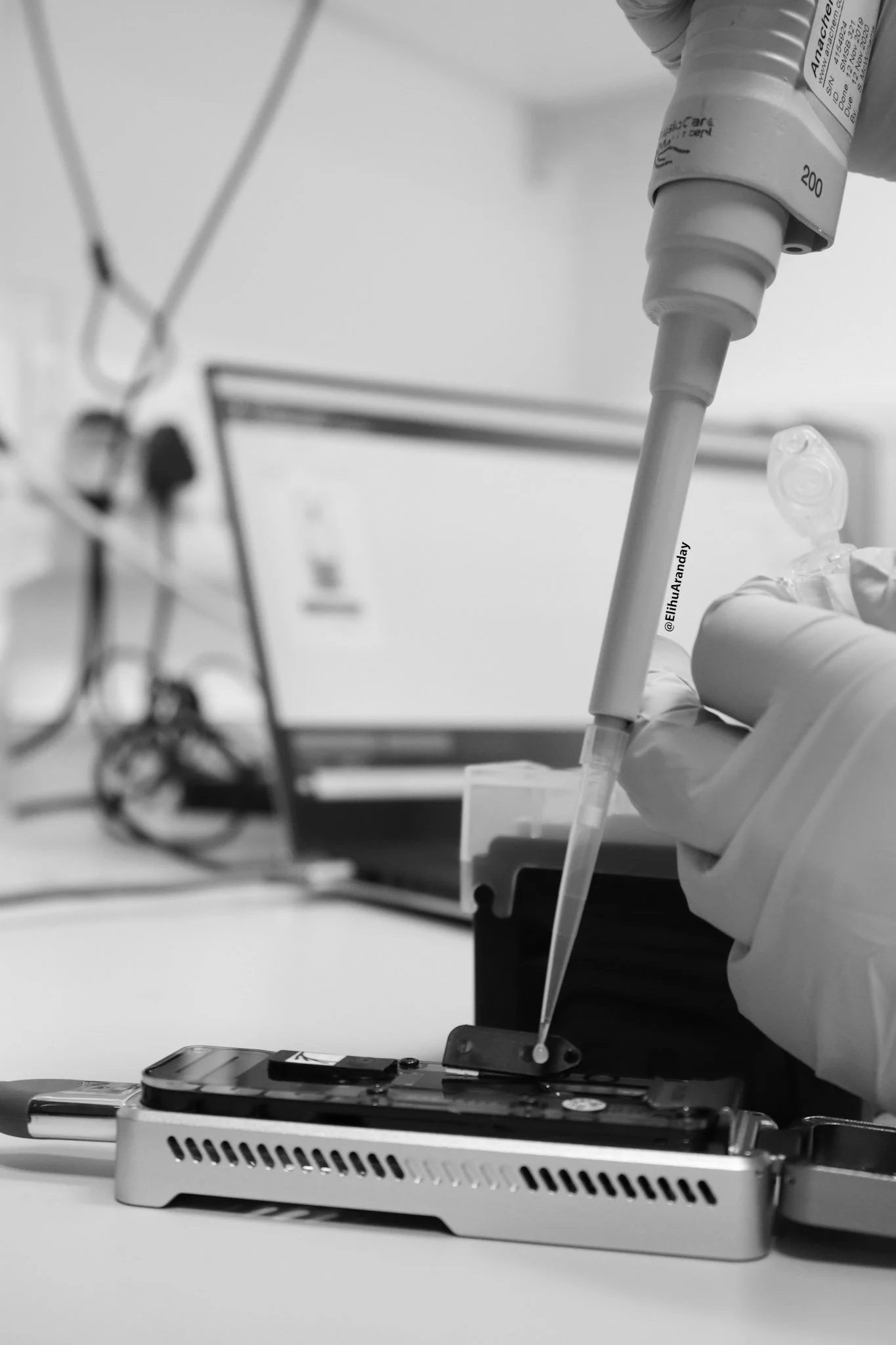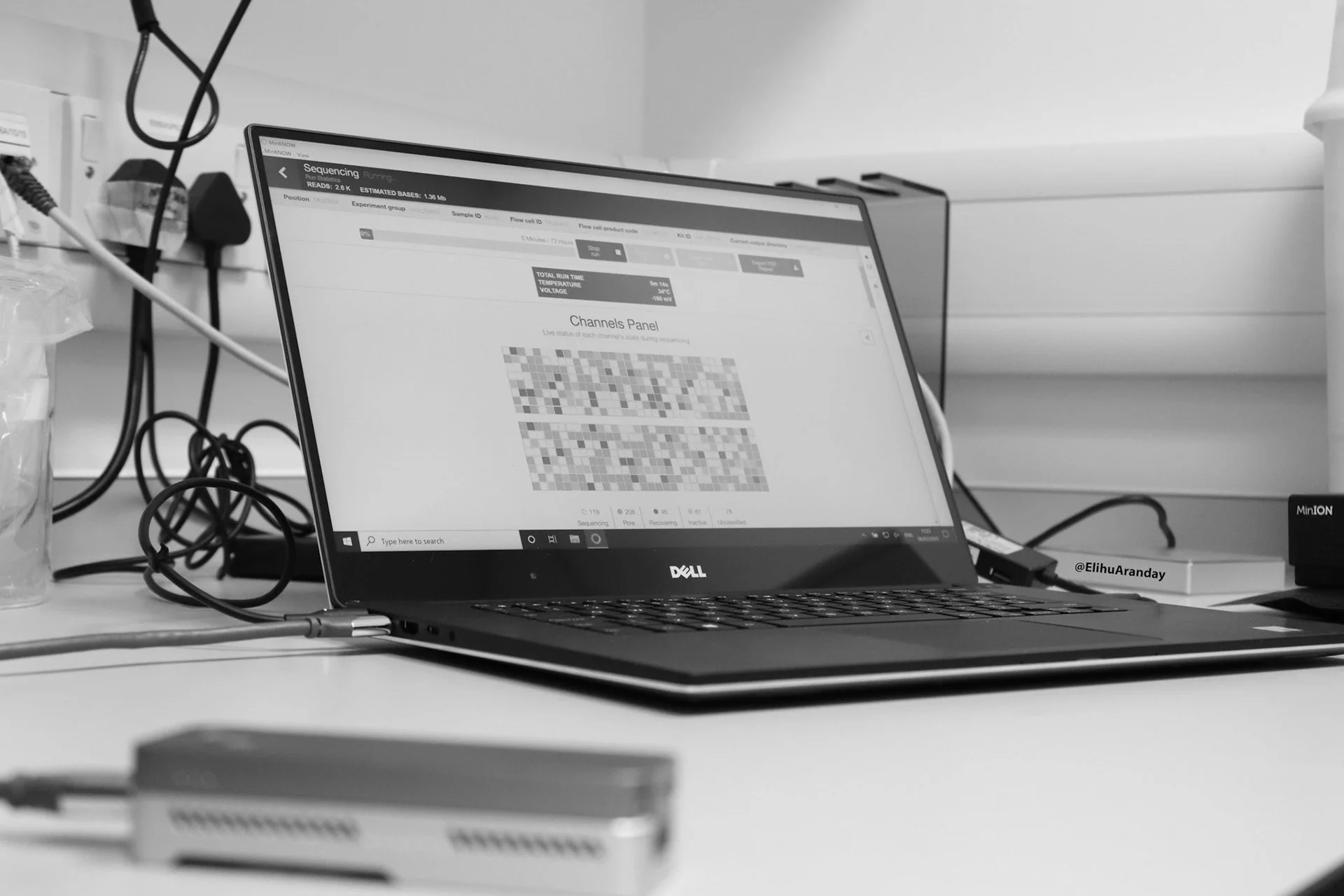CVR's Response to Covid-19: Viral Genomics group.
Author/Photographs: Elihu Aranday-Cortes (23/03/2020)
Edited by Elena Sugrue
As a leading virus research centre, the Centre for Virus Research (CVR) has a crucial role to play in combatting the COVID-19 epidemic, and the Viral Genomics group is at the heart of COVID-19 research response at the CVR.
The Viral Genomics group, led by Dr Ana da Silva Filipe, is sequencing SARS-CoV-2 virus from COVID-19 infected patients in Scotland. The genomic analyses performed by the CVR Bioinformatics group using the resultant sequences are an essential tool to study the introduction and spread of the virus in Scotland. I followed some members of the Viral Genomics team as they processed these samples in less than 48 hours.
The Viral Genomics group at the CVR. From left: Dr Lily Tong, Dr Katherine Smollett, Dr Stephen Carmichael, Dr Ana da Silva Filipe, Mrs Natasha Johnson, Mrs Jenna Nichols and Mr Daniel Mair.
Dr Sarah McDonald is the operations manager of our biorepository that stores biological samples from COVID-19 infected patients in Scotland for use in research. She is the link between the CVR and the NHS Greater Glasgow & Clyde West of Scotland Specialist Virology Centre (NHSGGC). She is responsible for the smooth transfer of samples and clinical data to CVR.
The samples received contain RNA isolated from nasal swabs coming from patients infected with COVID-19. These samples were sent by NHSGGC to the CVR, and even though the RNA samples are not infectious, they were unpacked inside of our containment level 3 (CL3) facility for inspection to ensure their safety. Access to the CL3 labs is restricted to highly trained staff, as much more rigorous health and safety protocols and procedures are required in these labs in accordance with the materials handled.
Mrs Angela Elliott, CL3 manager, getting ready for handling samples in the Richard M. Elliott Biosafety Laboratories.
As the RNA samples are not infectious, they can be handled in lower risk labs (CL2). Dr Stephen Carmichael begins the pre-sequencing process, called library preparation, by converting the RNA sample to complementary DNA and then amplifying the SARS-CoV-2 genome by PCR, a biochemical process that repeatedly copies a particular sequence of DNA.
Dr Katherine Smollett continues the process by cleaning the amplified samples from the previous reaction mixture. Once the samples are quantified and adjusted to the right concentration, they are now ready for sequencing.
Dr Katherine Smollett loads the samples onto the MinION sequencer. This small and portable sequencer can detect SARS-CoV-2 in real time; and after 4 hours collects enough of the viral sequences to generate the complete SARS-CoV-2 genome.
Dr Richard Orton analysing the genomic sequence of SARS-Cov-2. In less than 48 hours since first receiving the patient samples at the CVR, the Bioinformatics group reported the analyses and released the SARS-CoV-2 genomic sequences to the scientific community via Virological and GISAID.
Dr Ana Da Silva Filipe talking with STV about the main findings of the genomic analysis and the importance of collaborative work between clinicians, diagnostic labs, and research partners.
The CVR is to play a key role in new COVID-19 scientific project, announced on Monday 23 March.
The project, which will be led by the University of Edinburgh with involvement from colleagues in Glasgow, Imperial College London, University College London and the University of Liverpool, has received £4.9m of rapid response government funding to tackle the SARS-CoV-2 pandemic.
You can read more about the CVR’s ongoing response to COVID-19 here.

